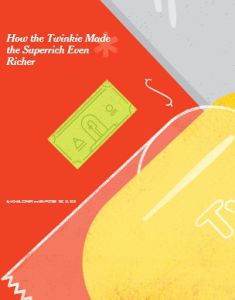Join getAbstract to access the summary!

Join getAbstract to access the summary!
Michael Corkery and Ben Protess
How the Twinkie Made the Superrich Even Richer
The New York Times, 2016
What's inside?
What can the revival of the Hostess snack brand reveal about how private equity firms generate massive profits?
Recommendation
Private equity has a proven track record when it comes to making money, but the jury is still out on how these firms’ dealings affect workers. In this in-depth article for The New York Times, reporters Michael Corkery and Ben Protess offer a detailed analysis of private equity’s involvement in the 2013 revival of the Hostess snack brand. They present a nuanced picture of private equity’s complicated relationship with workers and show how private equity executives became America’s wealthiest individuals. getAbstract recommends this article to those keen to learn about how the tentacles of private equity affect everyday life.
Summary
About the Authors
Michael Corkery and Ben Protess are reporters at The New York Times.



















Comment on this summary